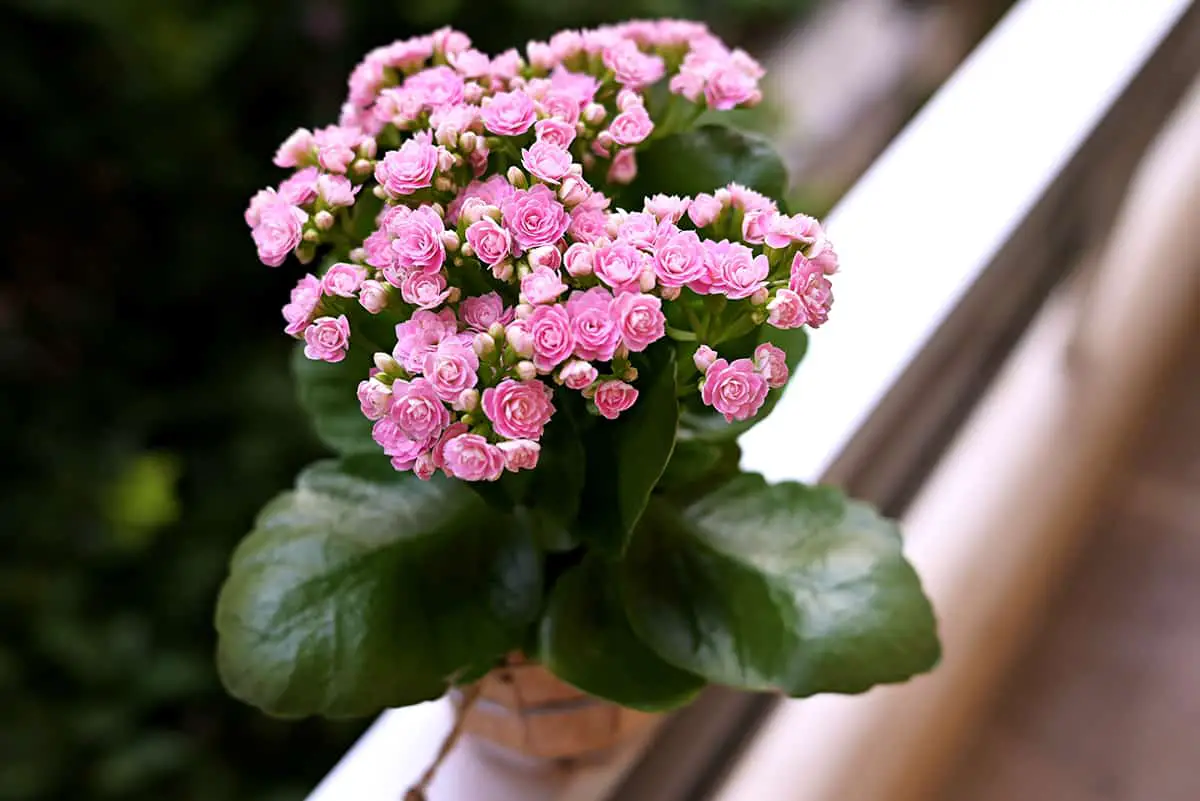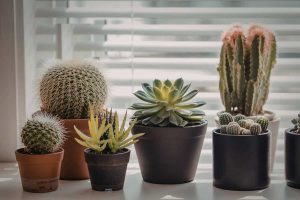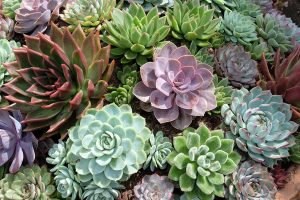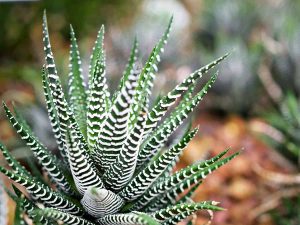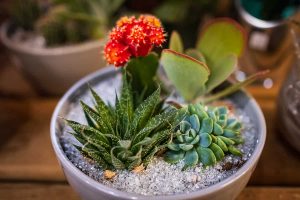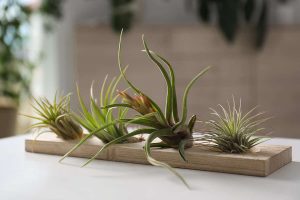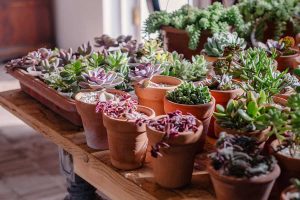Kalanchoe plants are versatile and easy to care for, making them an excellent choice for beginner gardeners or those looking to add an attractive succulent to their collection.
Native to Madagascar, these thick-leaved plants can thrive indoors or outdoors, depending on the climate, and come in a diverse array of shapes, sizes, and colors. With proper care, kalanchoes can grace your home or garden with vibrant blooms and eye-catching foliage.
| Common Name | Kalanchoe, Widow’s-thrill |
| Botanical Name | Kalanchoe spp. |
| Family | Crassulaceae |
| History & Origin | Native to Madagascar and tropical Africa |
| Plant Type | Succulent, perennial |
| Mature Size | Up to 18 inches tall |
| Sun Exposure | Bright, indirect light preferred |
| Soil Type | Well-draining, cactus or succulent mix |
| Soil pH | Slightly acidic to neutral (6.0-7.5) |
| Temperature | Prefers 60-85°F (16-29°C) |
| Watering | Allow soil to dry between waterings |
| Fertilizing | Monthly in growing season, low-nitrogen mix |
| Bloom Time | Late fall to early spring |
| Flower Color | Varies (pink, red, yellow, orange) |
| Hardiness Zone | 10-12 (USDA zones) |
| Toxicity | Toxic to pets if ingested |
| Common Problems | Overwatering, powdery mildew, pests |
Table of Contents
Kalanchoe Overview
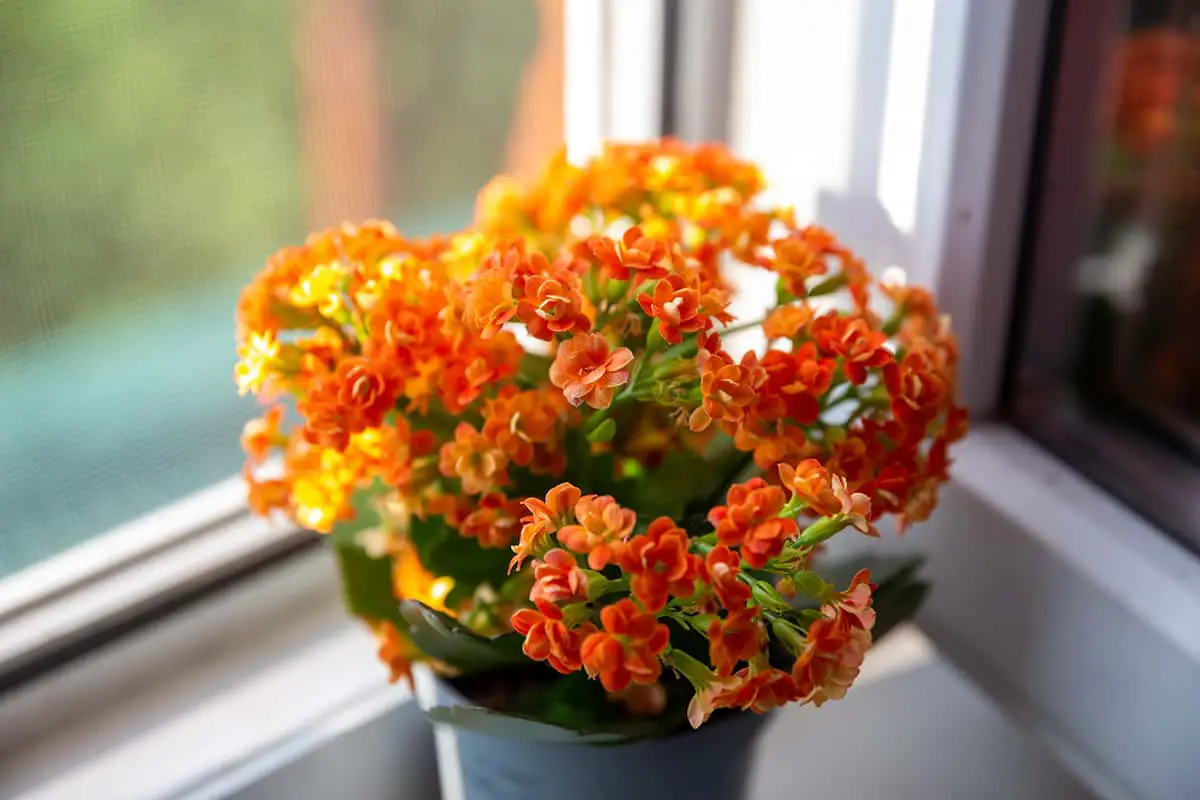
Species
Kalanchoe is a genus of over 100 species of plants native to Madagascar. These plants are known for their succulent, oval-shaped, often scallop-edged green leaves. Some varieties develop red leaves or leaf edges when grown with sufficient sunlight. Here are some popular ones
- Kalanchoe blossfeldiana: Known as the “Flaming Katy,” this is arguably the most popular species. It’s celebrated for its bright, long-lasting flowers and compact growth, perfect for indoor cultivation.
- Kalanchoe luciae: Also referred to as the “Paddle Plant,” it features large, rounded leaves that turn a striking red when exposed to the right amount of sunlight.
- Kalanchoe tomentosa: The “Panda Plant” boasts fuzzy leaves with brownish markings on the edges, resembling a panda’s coloring, hence its name.
- Kalanchoe pinnata: Commonly known as the “Air Plant,” it has the unique ability to produce plantlets along the edges of its leaves, which can easily root and grow into new plants.
- Kalanchoe thyrsiflora: Another “Paddle Plant,” closely related to K. luciae, it features slightly different coloring and a more pronounced central flower spike when it blooms.
- Kalanchoe daigremontiana: This “Mother of Thousands” produces numerous tiny plantlets on the margins of its leaves, which drop off and root with remarkable ease.
- Kalanchoe marmorata: Known for the “Penwiper Plant,” it has distinctive spotted leaves that make it stand out among other varieties.
- Kalanchoe beharensis: The “Velvet Leaf Kalanchoe” or “Felt Bush” is known for its large, velvety leaves that have a unique texture and appearance.
Each species and variety has its own unique set of characteristics, from leaf shape and texture to flower color and blooming habits. While some Kalanchoes are grown for their foliage, others are prized for their flowers. Regardless of the type, Kalanchoes share a common ease of care that makes them excellent for gardeners of all levels.
Botanical Characteristics
These plants belong to the family Crassulaceae and are known for their air-purifying capabilities. The leaves exhibit a unique characteristic called ‘Crassulacean Acid Metabolism‘ (CAM). This adaptation allows Kalanchoe plants to perform photosynthesis more efficiently during periods of drought.
Kalanchoe Propagation
Seed Propagation
To begin with seed propagation, select a well-draining soil for your kalanchoe. Fill your seed tray or container with the soil, and lightly scatter the tiny seeds on top. Do not cover the seeds with soil, as kalanchoe seeds require light to germinate. Place your tray in a spot with consistent bright, indirect light and temperature between 60 and 85 degrees Fahrenheit. Keep the soil slightly moist until germination occurs, typically within 2-3 weeks.
Cuttings Propagation
Alternatively, propagate kalanchoe using cuttings from an existing plant. This method is faster and more reliable than seed propagation. Follow these steps for successful cuttings propagation:
- Select a branch: Choose a healthy, 2-3 inch section from a fully grown kalanchoe, and remove it with a sharp pair of gardening shears.
- Prepare the cutting: Remove the bottom leaves and allow the cut end to dry in a warm location for one or two days, letting it form a callus. This process helps prevent rot when planted.
- Plant the cutting: Use a mixture of peat and perlite for successful rooting. Gently insert the callused end into the moistened mixture up to the first leaf. Enclose the entire container in plastic to create a humid environment that promotes rooting.
- Wait for roots: Be patient, and give your cutting time to establish roots. Once rooted, you can transplant your new Kalanchoe plant into its permanent location. Provide it with proper care, such as maintaining a warm temperature, providing bright sunlight, and watering appropriately for a thriving kalanchoe.
Growing & Care For the Kalanchoe
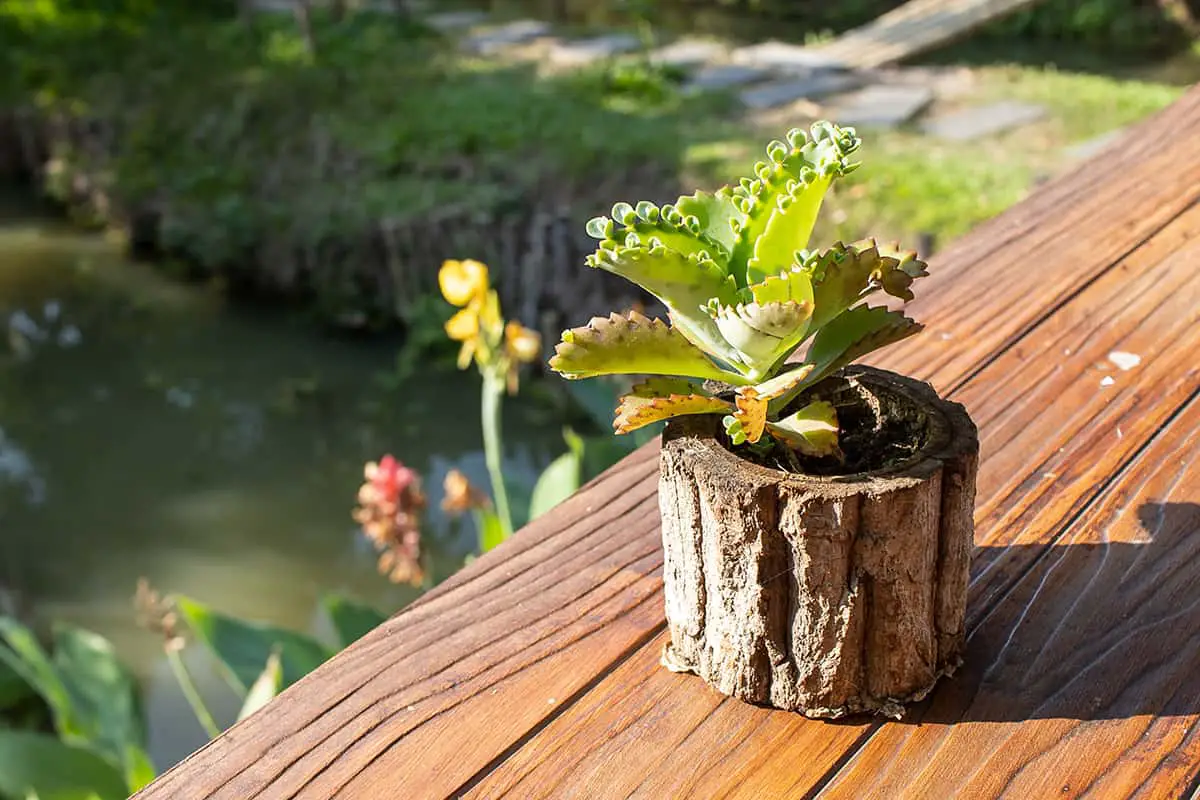
Light
Kalanchoe plants thrive in bright, indirect light. It’s best to place them near a window with filtered sunlight. If you decide to grow them outdoors, choose a location that gets full sun but has some protection from harsh afternoon sunlight.
Soil
It’s essential to use a well-draining potting medium for kalanchoe plants. A cactus mix or soil used for succulents works well, as it provides the right balance of drainage and nutrients. You can also create a mix of equal parts potting soil, perlite, and sand.
Watering

Allow your kalanchoe plant to dry out completely between waterings, as overwatering can lead to root rot. To determine if your plant needs water, stick your finger about an inch into the soil. If it feels dry, give the plant a thorough watering until water drains from the bottom of the pot. Be sure to empty the saucer under the pot to prevent the plant from sitting in water.
Temperature and Humidity
Kalanchoe plants prefer mild temperatures ranging from 60°F to 75°F (16°C to 24°C). They can tolerate temperatures as low as 45°F (7°C) for short periods, but extended exposure to cold may harm the plant. Maintain humidity levels between 40% and 60% to ensure healthy growth. If you live in a dry area, you can place a tray filled with pebbles and water near the plant to increase humidity levels around it.
Fertilizing Schedule
Fertilize your kalanchoe once per month during spring and summer. Use a well-balanced, general-purpose houseplant fertilizer. Remember to follow the label instructions for dosage and application.
Pruning Techniques
Pruning is important for maintaining the shape and size of your kalanchoe. Use clean, sharp shears to cut back leggy stems or deadhead faded blooms. Prune lightly and regularly rather than making drastic cuts.
Pest and Disease Management
Kalanchoe plants may attract pests like mealybugs or aphids. Inspect your plant regularly for signs of infestation. If you find pests, use a gentle insecticidal soap or neem oil solution to treat the issue. Additionally, ensure proper air circulation and avoid overwatering to prevent common diseases such as root rot.
By following these simple steps, your kalanchoe will remain healthy and vibrant. Enjoy tending to your plant and watching it grow!
Troubleshooting Common Problems
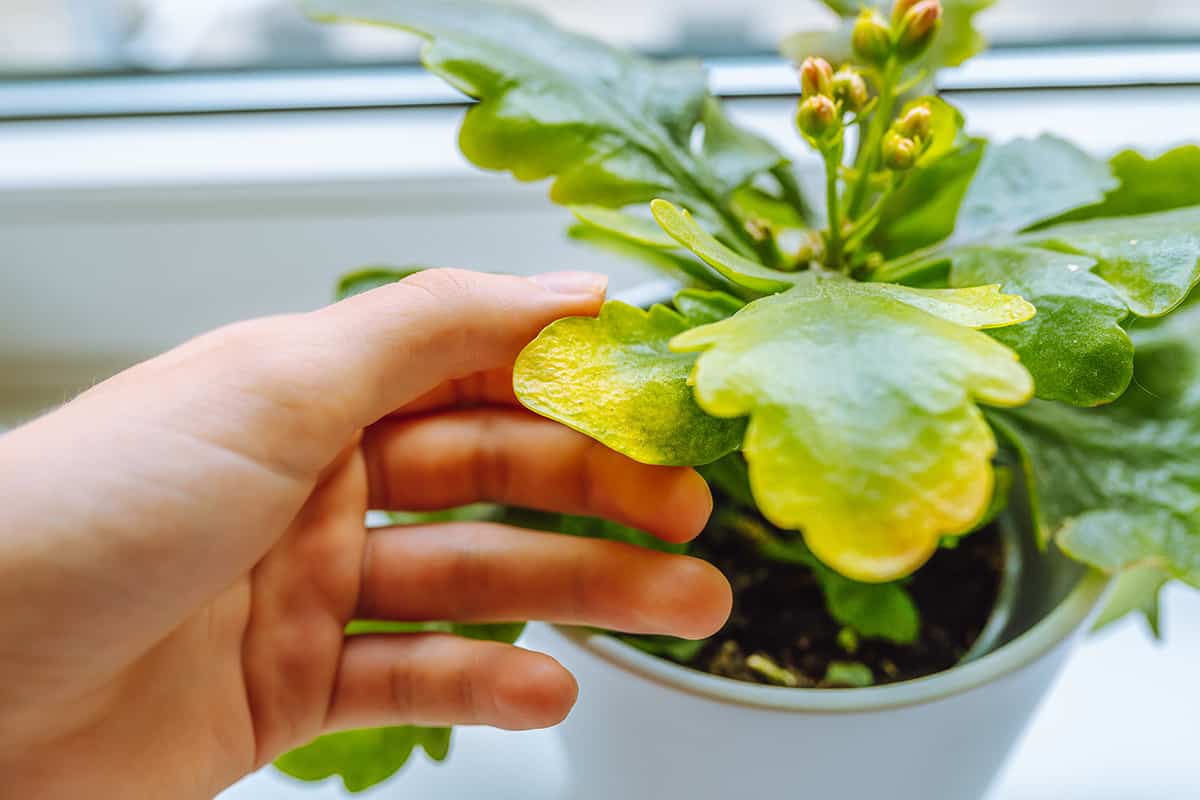
Overwatering Issues
One of the most common problems with Kalanchoe plants is overwatering. Be attentive to your plant’s needs by checking the soil moisture regularly. Ensure you let the soil dry between waterings since overwatered plants may display mushy leaves, feel heavy, and show signs of root rot. To fix this, reduce watering frequency and repot the plant in well-draining soil if necessary.
Leaf Discoloration
Kalanchoe plants may experience leaf discoloration issues as they require indirect but bright light. Discolored leaves can occur if your plant is exposed to too little light or intense sunlight. Place your Kalanchoe in a spot with bright, indirect sunlight or partial shade for optimal light conditions. If planted outdoors, provide afternoon shade to protect from harsh sun.
Stunted Growth
Stunted growth in Kalanchoes is often a result of insufficient nutrients. Feed your plant every 2-3 months with a houseplant fertilizer to encourage growth. Ensure you follow the package instructions for proper application. In some cases, stunted growth can also be due to a lack of light, so make sure your plant is receiving enough bright, indirect light for healthy growth.
Seasonal Care Tips
Winter Care
During winter, your kalanchoe needs less water. Make sure to allow the soil to dry between waterings. Provide bright, indirect light for your plant, as days are shorter and sunlight is less intense.
It’s crucial to maintain a temperature between 60 and 85 degrees Fahrenheit, as kalanchoes are sensitive to cold temperatures. If necessary, move your plant to a warmer spot and keep it away from drafts.
Summer Care
In summer, the kalanchoe thrives in partial shade to full sun. If your plant is outdoors, ensure it has some afternoon shade, especially during hot days. If it’s indoors, place it by a well-lit window.
Watering: During summer, water your kalanchoe more frequently. However, avoid overwatering and ensure the soil drains well. Use well-draining soil for the best results.
Fertilizing: To promote healthy growth, feed your kalanchoe with a general-purpose houseplant fertilizer every month during the summer.
Kalanchoe Repotting
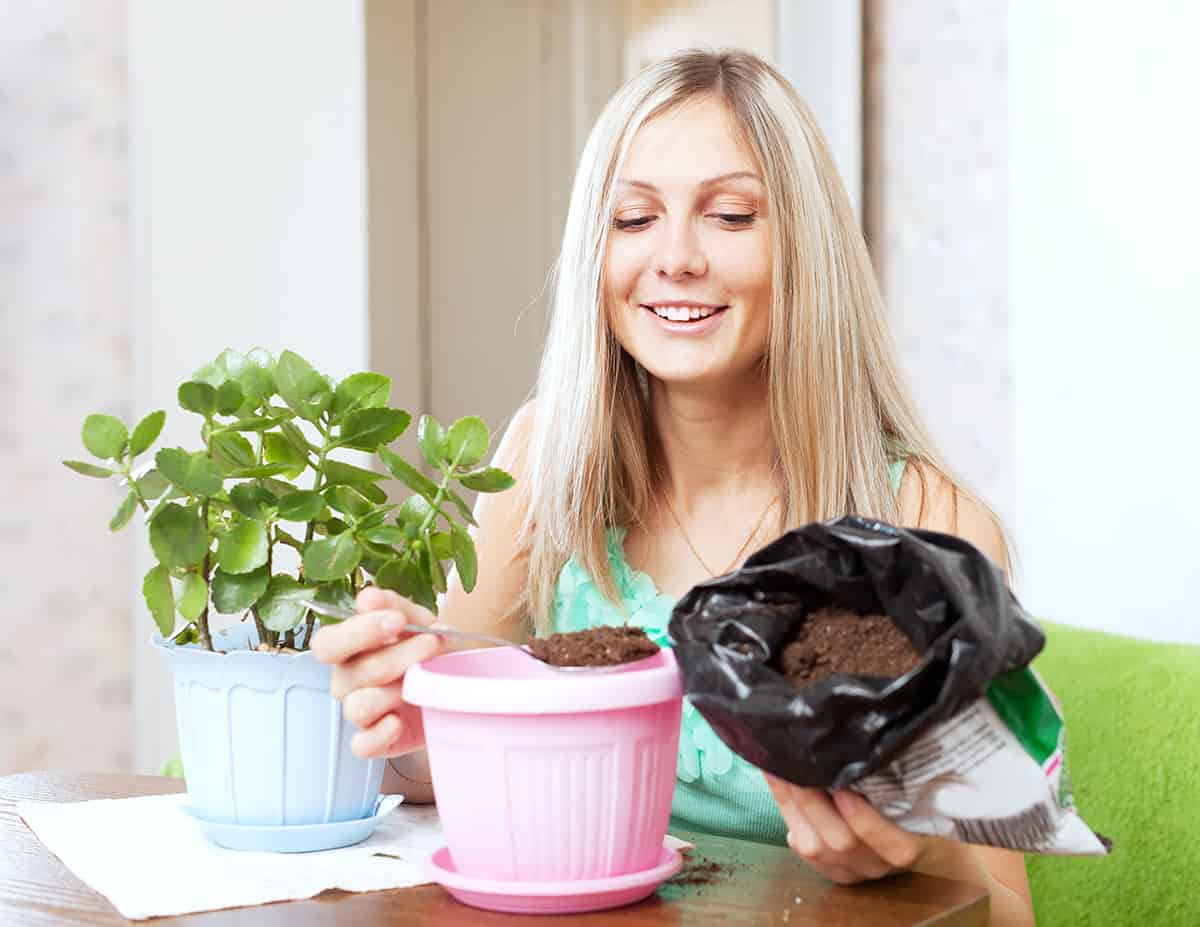
When it’s time to repot your Kalanchoe plant, choose a pot one size larger than the current one. Make sure the new pot has drainage holes. Use well-draining soil made for succulents or create your own by mixing equal parts peat and vermiculite.
Before you start, water the plant and let it rest for a day. This makes it easier to remove the root ball from the pot. Gently remove the Kalanchoe from its current container by tipping it upside down or using a small trowel. Loosen the root ball, being careful not to damage the roots.
Fill the new pot with an appropriate amount of soil mix. Place the plant in the center, ensuring the roots are evenly spread. Top off with more soil mix, firmly pressing it down, but avoid compacting it too much. The soil surface should be slightly lower than the rim to facilitate watering.
Water the repotted plant to help it settle in. Keep it in a bright, indirect light area for the first few weeks. Allow it to adapt to its new environment before returning it to its usual location. Monitor your Kalanchoe for any signs of stress and adjust the care as needed.
Designing with Kalanchoe
Companion Planting
When designing with Kalanchoe plants, consider companion planting for a harmonious display. Kalanchoe pairs well with other succulents, such as Echeveria and Crassula. Additionally, it complements drought-tolerant perennials like Lavender and Sedum. This combination enhances your garden’s visual appeal while maintaining similar watering needs.
Landscaping Uses
Kalanchoe plants offer versatility in landscape design. They work well as border plants along walkways or to outline garden beds. You can use them in container gardens on patios or balconies or even as indoor plants near sunny windows.
Consider these landscape uses for your Kalanchoe:
- Ground Cover: Plant them in clusters to create a low-maintenance, textured ground cover.
- Rock Gardens: Kalanchoe thrives in rocky environments, adding vibrant colors and unique shapes.
- Hanging Baskets: Trailing varieties, like Kalanchoe uniflora, cascade gracefully from hanging baskets.
Kalanchoe Blooming Secrets
Your Kalanchoe plant can produce bright and colorful flowers with proper care. Follow these simple steps to ensure your plant blooms:
- Light: Place your plant in a sunny area with bright, indirect light. Adequate sunlight is essential for flower production.
- Water: Allow the soil to dry out completely between waterings. Overwatering can significantly impact blooming potential.
- Temperature: Keep Kalanchoe plants at a night temperature of 55 to 60 degrees Fahrenheit to encourage blooming.
- Darkness: Expose your plant to 14 to 16 hours of uninterrupted darkness daily for at least six weeks.
It’s important also to consider seasonal factors when encouraging your Kalanchoe to re-bloom:
- Summer: Keep the plant in well-drained soil and maintain a moderate moisture level. Move your plant indoors if located in a zone below USDA 9 or where frost is expected.
- Fall: To stimulate re-blooming, adjust conditions by reducing water and exposing the plant to longer periods of darkness.
